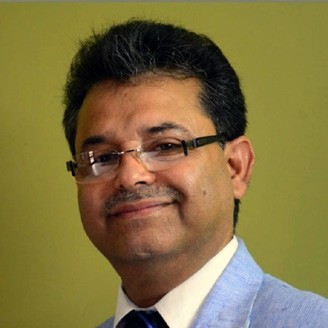The Connection between Hormones and Hair Loss
Experienced aesthetic medicine practitioners unravel the interplay of hormones and hair health and how these can be addressed with aesthetic treatments and nutrition in conversation with Shriyal Sethumadhavan
Hormones have a close association with hair growth, which is why they have a huge impact on hair cycle and hair follicle structure.
Dr Pankaj Chaturvedi, Hair Transplant Surgeon and Founder, MedLinks Clinic, Delhi, says, “Androgen hormones, also referred to as “male” hormones, like DHEA and testosterone, play the largest role in overall hair growth. When the levels of these hormones are too high, one may experience excess hair growth, especially on the body or face. However, when the hormone levels drop, the reverse occurs and can lead to thinning hair and even hair loss.” He adds that the hormones produced by the thyroid also play an important role in hair growth and hair loss. When the thyroid is not active enough (hypothyroidism), the metabolism slows. And to compensate, the body begins to shut down “less important” functions, such as hair growth. (Hypothyroidism causes a decrease in anagen frequency, and causes hair thinning).

On his part, Dr Anil Ganjoo, Sr Consultant Dermatologist and Laser Surgeon, and Director, Skinnovation Clinics, says that the androgens have a direct effect on the androgen-dependent hair on the scalp. “High androgen levels as well as increased androgen receptor sensitivity can both lead to downregulation of androgendependent hair. This can happen even with normal circulating androgen levels. The high activity of the 5 alpha reductase enzyme that is responsible for conversion of testosterone into its active form the 5 DHT is also responsible for the androgenic hair loss.” He goes on to add that the thyroid hormones are known to maintain normal hair follicle function and health as well as keratinocyte and melanocyte proliferation in the hair follicles. Therefore, a deficiency of thyroid hormones can lead to diffuse hair loss. High levels of thyroid hormone as seen in hyperthyroidism can also lead to diffuse alopecia. However, the reason for this is not known. “Autoimmune thyroiditis can also coexist with alopecia areata a known T cell-mediated auto immune condition,” says Dr Ganjoo.

In the case of androgenetic alopecia, in males, the vertex and frontotemporal regions are most affected while in females there is a widening of the central partition, points out Dr Ishan Sardesai, Aesthetic Doctor, Founder of The Face Centre. “There are higher levels of dihydrotestosterone, androgen receptors, and 5 alpha reductase in those suffering from AGA.” Increased activation of androgen receptors shortens the growth (anagen) phase of the normal hair growth cycle. This is a progressive condition, which ultimately causes follicular miniaturisation and baldness. Dr Sardesai furthers, “Thyroid hormone-related disorders (hyper or hypo thyroidism) can also lead to hair loss and thinning. This is because normal levels of thyroid hormones are important for hair growth and maintenance.” He also points out to other factors that can contribute to hair loss such as stress, smoking, viral infections, poor diet, and lack of sleep.
Hidden mechanisms
A variety of hormones have been shown to impact the hair cycle and mediate hair growth, including thyroid hormones, dihydrotestosterone (DHT), estrogen, and testosterone.
As we know, hormones are the primary regulators of proper hair growth in humans, says Dr Chaturvedi. He further explains how they operate on hair follicles: “It happens through interaction with intracellular receptors inside DPCs, depending on where the hair is located over the body. Androgen’s major effect is to interact with androgen receptors in DPCs. The impact of androgen is to change the vellus hairs, which are thin, short, and straight into terminal hairs that are darker, bigger, and curlier in sex-specific parts of the body.” Androgens stimulate more visible body hair during puberty and continue increasing various hair follicles and hair sizes for many years. Paradoxically, in marked contrast, androgens may simultaneously slowly inhibit specific scalp follicles, which causes androgenetic alopecia (balding). Androgen-dependent hair disorders – hirsutism (male pattern hair distribution) in women and androgenetic alopecia in both sexes.
Dr Sardesai suggests a balanced diet containing an adequate source of all essential macro and micronutrients to keep the hair strong and healthy. He says, “Dietary deficiency affects the whole body but the hair is often one of the first to be affected. Hence, it is essential to get blood tests done in a person suffering from hair loss to check for possible vitamin and mineral deficiencies like folic acid, vitamin B12, iron, and calcium.”
Treating hormonal-related hair loss
PRP and other regenerative therapies are universal stimulators of hair growth.
Dr Ganjoo says, “Although these are not specific for hormonal hair loss and do not target the pathological process, they can stimulate hair growth in any situation, and so they do help as useful adjuvants.”
On his part, Dr Chaturvedi says that Platelet-rich plasma (PRP) has become one of the best methods for the treatment of various types of alopecia. “It is an autologous preparation of platelets in concentrated plasma. These platelets are generally about five times more concentrated in PRP than in regular blood. This concentration of platelets is useful because platelets secrete growth factors and promote hair growth.” He details this further by adding, “Activation of alpha granules of platelets releases numerous proteins, including platelet-derived growth factor (PDGF), transforming growth factor (TGF), vascular endothelial growth factor (VEGF), insulin-like growth factor (IGF), and epidermal growth factor (EGF). It is hypothesised that growth factors released from platelets may act on stem cells in the bulge area of the follicles, stimulating the development of new follicles and promoting hair growth.” At MedLinks, PRP therapy combined with other growth factors has been proven a simple, costeffective, and feasible treatment option for androgenic alopecia, with high overall patient satisfaction.
Dr Sardesai believes that aesthetic treatments like mesotherapy and PRP (or its advanced version GFC) are important for several reasons. He says, “They help to stop hair loss, thicken existing hair, and promote new hair growth. Multiple sessions are required for effective and long-lasting results.” These treatments basically involve the administration of hair growth factors into the scalp either through direct injection or microneedling. They are minimally invasive with no downtime. For best results, these aesthetic treatments should be combined with oral or topical medications (for example: Minoxidil, finasteride) and lifestyle changes (diet improvement, exercise). Hormonal imbalances also need to be corrected appropriately.
Optimising hair health through nutrition
Both men and women worry about hair loss, which can be influenced by a number of factors, including heredity, hormone imbalances, and dietary inadequacies. Among these elements, androgens and thyroid hormones are vital in controlling hair development, and healthy eating can improve hair health. In the content, we will examine the role that androgens, thyroid hormones, and other elements play in hair loss and offer tips for improving hair health through diet.
The most well-known androgen is testosterone, which is a male sex hormone. Androgens can significantly affect hair loss even though they are essential for many aspects of male development. The most frequent type of hair loss is androgenetic alopecia, also referred to as male pattern baldness, and it is influenced by the hormone dihydrotestosterone (DHT), a testosterone derivative. Over time, DHT causes the hair follicles in the scalp to shrink, which causes the hair to become thinner and shorter and finally bald. “Thyroxine (T4) and triiodothyronine (T3) are two thyroid hormones that are crucial for controlling metabolism, and hair development. The cycle of hair growth can be thrown off by an imbalance in thyroid function, such as hypothyroidism (underactive thyroid) or hyperthyroidism (overactive thyroid),” says Dr Archana Batra, dietician, and certified diabetes educator in Gurgaon.
A nutritious diet that is well-balanced is key for maintaining good hair. Biotin, vitamin D, iron, zinc, and protein are among the nutrients that are important for hair development.
In particular, biotin is sometimes referred to as the “hair vitamin” since it helps to produce keratin, the protein that makes up hair strands. Patients with thyroid-related hair problems should consult a doctor for advice and treatment to rebalance their hormones.
Patients should concentrate on a diet that contains a variety of whole foods in order to improve hair health through nutrition. As Dr Batra advices, “Lean proteins, such as those found in poultry, fish, and beans, can help you get the amino acids your body needs for healthy hair development. A great source of vitamins and minerals including iron, zinc, and vitamin D is leafy greens, nuts, and seeds. Eggs, avocados, and nuts are a few examples of foods high in biotin that can be helpful.”